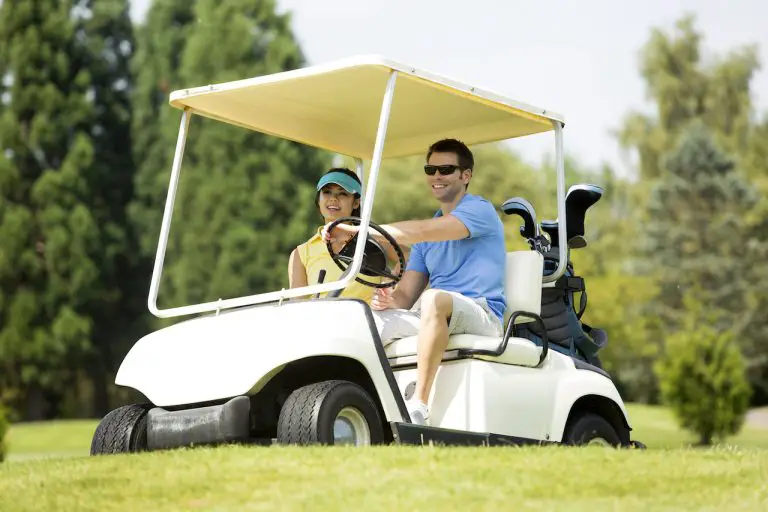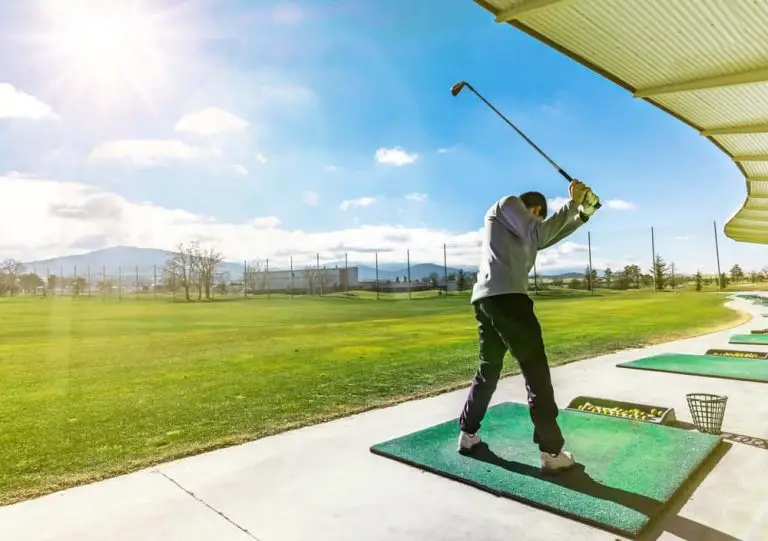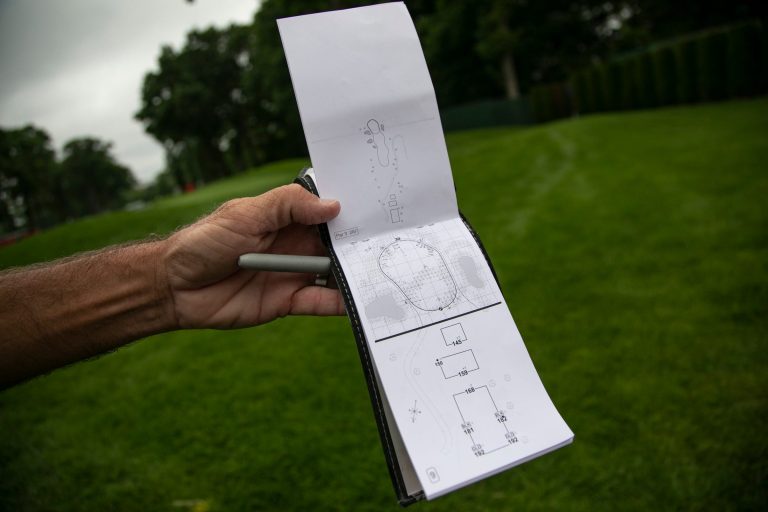Is Golf Driving Range Good Exercise

Golf is often regarded as a leisurely sport that offers a combination of relaxation and skill development. When it comes to the golf driving range, enthusiasts wonder if it can provide a meaningful workout and contribute to overall fitness. In this article, we will explore the question, “Is the golf driving range good exercise?”
While the driving range may not evoke images of intense physical exertion, it offers unique opportunities to enhance your fitness level and improve specific aspects of your game. By examining the physical demands of golfing at the driving range, the potential fitness benefits, and factors that influence exercise value, we can gain a comprehensive understanding of its impact on our health.
The driving range provides a controlled environment to practice and refine your golf swing. It involves repetitive movements, engages various muscle groups, and requires coordination and balance. But does it offer more than just skill enhancement? Can it truly be considered a form of exercise?
Throughout this article, we will delve into the intricacies of the golf swing mechanics, explore the fitness benefits of driving range practice, and discuss additional considerations to maximize your workout potential. We will also provide practical tips and strategies to help you optimize your fitness routine at the driving range.
Whether you’re a seasoned golfer looking to improve your game or someone seeking an enjoyable and effective exercise option, join us as we uncover the truth about golf driving range as a form of exercise. Let’s tee off and discover the fitness potential of this popular golf practice ground.

Understanding the Physical Demands of Golf Driving Range
Golf swing mechanics play a crucial role in the physical demands of golfing at the driving range. The golf swing involves a complex sequence of movements that engage various muscle groups and body systems. Understanding these physical demands is key to evaluating the exercise potential of the driving range. Let’s delve into the intricacies of golf swing mechanics and how they impact your body.
Golf Swing Mechanics and Muscle Engagement
The golf swing primarily involves the coordinated movement of the arms, shoulders, core, and lower body. It engages a combination of muscles, including the:
| Muscle Group | Role in the Golf Swing |
|---|---|
| Core | Provides stability and power generation |
| Shoulders | Initiates and controls the swing motion |
| Arms and Wrists | Control the club and generate clubhead speed |
| Hips and Legs | Generate power and transfer energy through the swing |
During the swing, these muscle groups work together in a sequential manner, producing a burst of force and generating power to propel the golf ball. The dynamic and coordinated nature of the swing involves both concentric and eccentric muscle contractions, adding to the exercise value of golfing at the driving range.
Cardiovascular Component of Golf Driving Range
While golf is not typically associated with intense cardiovascular activity, the driving range can still provide some benefits in this regard. Although the overall intensity may not match that of running or high-intensity workouts, the continuous swinging and walking involved in practicing at the driving range can elevate your heart rate to a moderate level.
The cardiovascular benefits of golfing at the driving range can vary depending on factors such as the duration of practice, swing intensity, and overall fitness level. Regular practice sessions that involve consistent movement and maintain an elevated heart rate can contribute to cardiovascular health over time.
Fitness Benefits of Golf Driving Range
Although golfing at the driving range may not resemble a traditional workout, it offers several fitness benefits that can contribute to overall health and well-being. Let’s explore the various ways in which the driving range can positively impact your fitness.
Muscle Engagement and Strength Development
Contrary to popular belief, the golf swing requires significant muscle engagement and can contribute to strength development. The rotational movements involved in the swing engage the muscles of the core, shoulders, and lower body, promoting muscular endurance and power. Over time, consistent practice at the driving range can lead to improved muscle tone and strength in these areas.
Flexibility and Range of Motion
Flexibility plays a crucial role in achieving an efficient and fluid golf swing. Golfers with good flexibility are better able to achieve a full range of motion, leading to improved swing mechanics and power generation. Regular practice at the driving range can help enhance flexibility, particularly in the shoulders, hips, and spine, contributing to better swing mechanics and reduced risk of injuries.
Balance, Coordination, and Proprioception
Golf is a sport that demands a high level of balance, coordination, and proprioception (awareness of body position and movement). The driving range provides an opportunity to refine these skills through repeated practice and feedback. The stability required during the swing, combined with the need for precise timing and control, helps improve overall balance and coordination.
Factors Influencing Exercise Value at the Golf Driving Range
The exercise value of golfing at the driving range can be influenced by several factors. Understanding and considering these factors can help you optimize your workout and maximize the benefits. Let’s explore these factors in more detail.
Intensity and Duration of Practice
The intensity and duration of your practice sessions at the driving range play a significant role in determining the exercise value. Increasing the intensity of your swings by focusing on power and speed can elevate your heart rate and contribute to a more challenging workout. Similarly, extending the duration of your practice sessions can enhance the overall cardiovascular benefit.
However, it’s important to strike a balance and avoid overexertion or fatigue. Gradually increasing the intensity and duration over time, while listening to your body, can help you progress and avoid injury.
Technique and Efficiency
The technique you employ during your driving range practice can also impact the exercise value. Efficient swing mechanics can increase the engagement of relevant muscle groups and optimize power generation. It’s essential to work on proper form and technique to maximize the exercise benefits and prevent strain or injury.
Taking lessons from a golf professional or seeking guidance from experienced golfers can help improve your technique and make your practice more effective. They can provide valuable insights and corrections to ensure you are utilizing your muscles efficiently.
Additional Exercise Considerations at the Golf Driving Range
In addition to the practice itself, there are additional considerations that can enhance the exercise value and overall fitness benefits of golfing at the driving range.
Warm-Up and Injury Prevention
Just like any physical activity, warming up before your driving range session is crucial. It helps prepare your muscles and joints for the movements involved in the golf swing, reducing the risk of injury. A warm-up routine can include dynamic stretches, light cardio exercises, and rotational movements to activate the muscles and increase blood flow.
Furthermore, incorporating injury prevention exercises into your routine can help strengthen key areas prone to strain, such as the lower back and shoulders. Exercises targeting core stability, flexibility, and mobility can provide a solid foundation for a safe and effective practice session.
Incorporating Strength and Flexibility Exercises
To complement your driving range practice, integrating strength and flexibility exercises into your fitness routine can further enhance your performance and reduce the risk of injuries. Strength training exercises, such as resistance training or bodyweight exercises, can target specific muscle groups involved in the golf swing, enhancing power and stability.
Incorporating flexibility exercises, such as yoga or stretching routines, can improve your range of motion and promote better swing mechanics. Focus on stretches that target the shoulders, hips, and spine to increase mobility and prevent limitations in your swing.
Balancing Fitness and Skill Development
While the driving range can provide exercise benefits, it’s important to strike a balance between fitness goals and skill development. Remember that the primary objective of the driving range is to improve your golf game and technique. However, by approaching your practice sessions with a focus on fitness, you can optimize the exercise value without compromising skill development.
Consider dividing your practice sessions into segments, dedicating some time to specific fitness-focused exercises and drills alongside working on your swing mechanics. This balanced approach allows you to target both aspects effectively and achieve your fitness and golfing goals simultaneously.
Conclusion
In conclusion, golfing at the driving range can indeed provide exercise benefits and contribute to your overall fitness. While it may not offer the same intensity as traditional workouts, the golf swing engages various muscle groups, improves flexibility and balance, and enhances cardiovascular fitness to a certain extent.
By understanding the physical demands of the golf swing, practicing with proper technique, and incorporating additional exercises, you can optimize the exercise value of your driving range sessions. Remember to warm up before your practice, focus on efficient swing mechanics, and consider supplementing your routine with strength and flexibility exercises.





